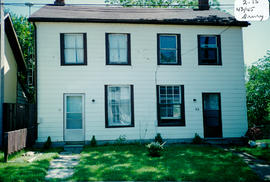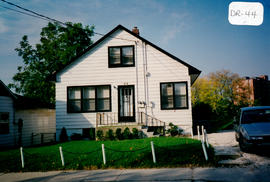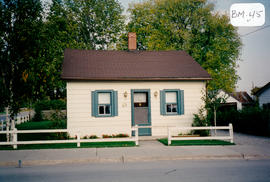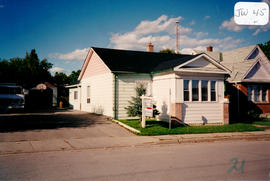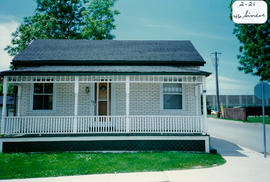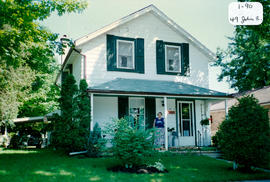- CA BWGPL GJ-HB-2017-03-20-06
- Item
- 1996
Part of George Jackson fonds
The mid-block building located at 43 and 45 Drury St. was built in the Neoclassical Duplex style in the 1860-1880’s. Leonard Saint bought the building in 1909 from Mrs. Garrett (mother of E. Garrett who owned the Bradford Witness newspaper). Len was in the building trade and he was a brick layer, a plasterer, and a cement worker in Bradford. In 1911, he moved the building twenty feet back from the street, raised it, and put in a cellar as well as a parged, stone foundation. He also added two rear kitchens. There was a garage on the back lot facing Elizabeth Street. The south side of the house was rented to various people. The building stayed in the Saint family until the 1980’s.
The two-storey, four-bay, semi-detached house has a simple form with separated, side-hall entrances in the formal, symmetrical façade. It has a shallow-pitched, gable roof and gable end chimneys. The upper portion of the original, wood-panelled doors is glazed and has multiple lights at the top. This is reminiscent of the transom found in a more ‘’upscale” home of this period. There are large window openings with high floor to ceiling heights. Large, 6/6 wood sash windows at the ground floor are original. The upper-floor window openings align with the ground-floor openings and the windows have plain wood frames and sills. Wood frame construction is covered with vinyl siding. The original cladding was stucco on wood lath. According to the 2000 inventory, this building is a modest example of workers’ housing. It also notes that it is in good condition with some original details remaining. (1, 2, 3)
George Jackson

